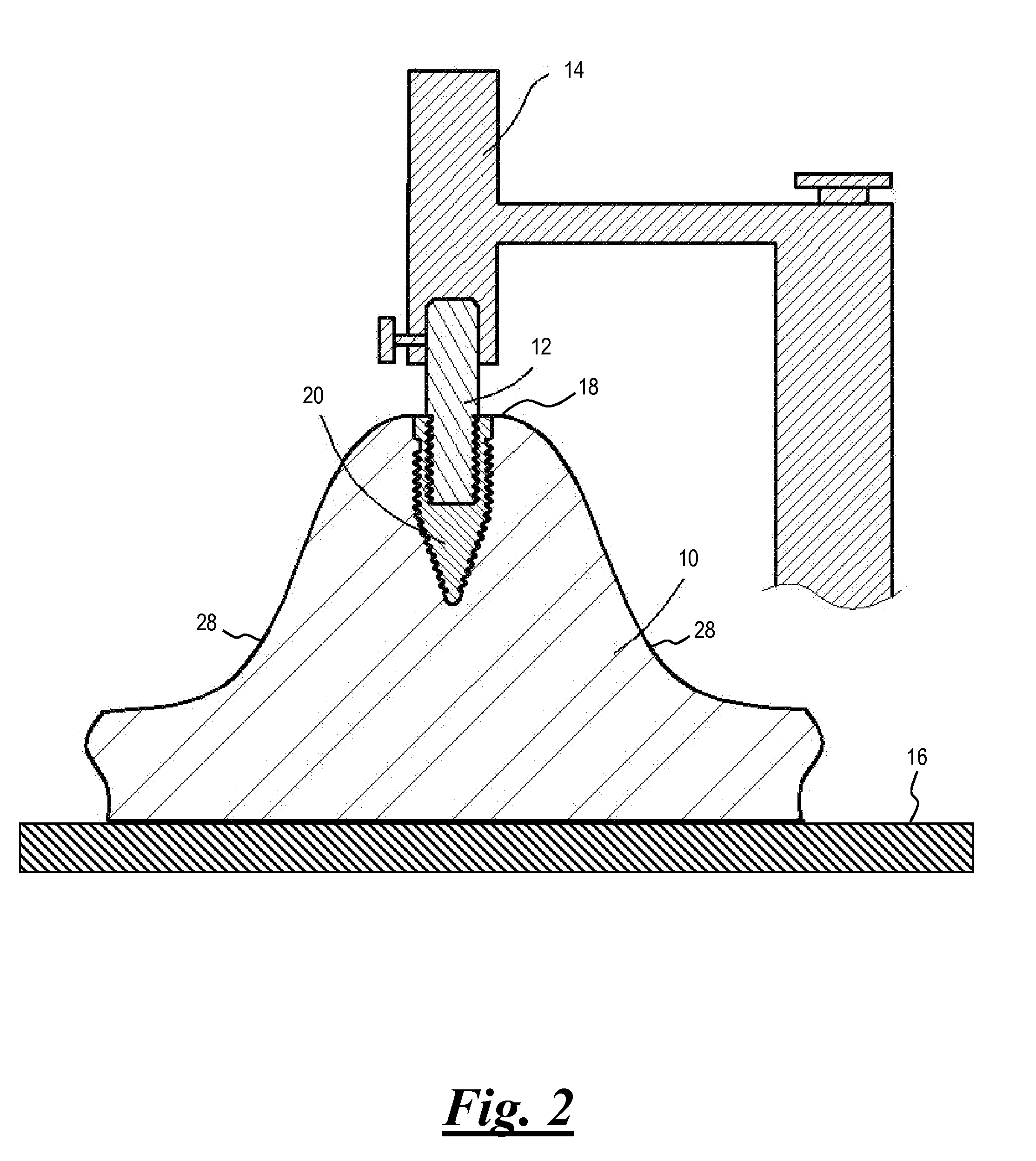Oral Implant Placement System and Method
a technology for placing and installing dental implants, applied in the field of dental implants, can solve the problems of excessive wear and tear, loss of teeth, and negative effect on eating habits
- Summary
- Abstract
- Description
- Claims
- Application Information
AI Technical Summary
Benefits of technology
Problems solved by technology
Method used
Image
Examples
Embodiment Construction
[0033]In the discussion that follows, like reference numerals are used to refer to like structures in the various figures.
[0034]The general arrangement of a process for producing an oral implant is shown in FIG. 1. Reference should be made to this figure in combination with other figures referred to in the discussion that follows.
[0035]At step s100 a set of impressions are made of the maxilla and / or mandible of a patient's mouth, particularly the patient's dental arch in the region of the patient's mouth selected for the installation of one or more dental implants. The object of making an impression is to accurately relate an analog of the implant or implant abutment to other structures in the dental arch. A malleable impression material is typically pressed into a tray, and the tray is then inserted in the patient's mouth. The patient bites into the impression material to create an impression of his or her maxilla and / or mandible in the material. Typical impression materials may in...
PUM
 Login to View More
Login to View More Abstract
Description
Claims
Application Information
 Login to View More
Login to View More - R&D
- Intellectual Property
- Life Sciences
- Materials
- Tech Scout
- Unparalleled Data Quality
- Higher Quality Content
- 60% Fewer Hallucinations
Browse by: Latest US Patents, China's latest patents, Technical Efficacy Thesaurus, Application Domain, Technology Topic, Popular Technical Reports.
© 2025 PatSnap. All rights reserved.Legal|Privacy policy|Modern Slavery Act Transparency Statement|Sitemap|About US| Contact US: help@patsnap.com



